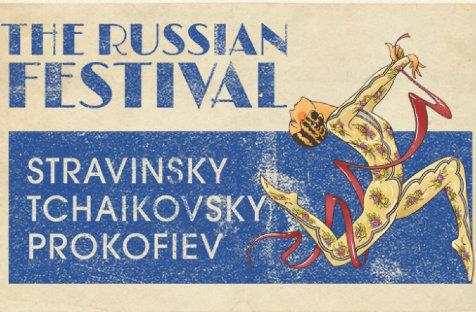There are times when a reviewer feels what she has to say is superfluous – or, perhaps, that she has not earned the right to say it. Such is my dilemma, faced with the extraordinary achievement of the Melbourne Symphony Orchestra over the past week. (In case this is striking apprehension into the hearts of orchestra management that my review is not going in a favourable direction: fear not).
It’s just that, from my ideal seat in the middle of Row G in the stalls, I could only comment on the music-making, not be a part of what was happening on stage. And that – the final of three concerts in the MSO’s week-long Russian Festival – was exceptional. The music of Tchaikovsky and Stravinsky was featured in every performance, and some MSO musicians also participated in Saturday’s Open Day sessions, Jams for Juniors.
Fellow ArtsHub reviewer Heather Leviston wrote of the opening concert that ‘Some of the most satisfying moments of [the first] evening were provided in the item after interval with Stravinsky’s The Firebird: Suite’. So it was fitting that the same composer’s The Rite of Spring rounded off the Festival on the final night. However, in terms of impact and audience satisfaction it shared line honours with Tchaikovsky’s Piano Concerto No.1 featuring soloist Nikolai Demidenko.
Principal guest conductor Diego Matheuz summoned plenty of energy to steer the orchestra through three demanding works, the first of which was Sensemaya by the Mexican composer, Silvestre Reveultas. It was composed in the late 1930s and based on fellow-revolutionary Nicolas Guillen’s poem, Chant to kill a snake.
Percussion and rhythm were the strongest elements of the piece, building from the outset in a way reminiscent of a very different work, Ravel’s Bolero. After an introduction featuring low winds and clap sticks, the tuba carried the melody while the strings were used to reinforce the insistent beat. Matheuz held the disparate elements together as the work developed into filmic proportions. In that way the performance could be seen as a rehearsal for the Stravinsky to come – but with its own hypnotic charm.
Soloist Nikolai Demidenko decided to present the Tchaikovsky Piano Concerto No.1 without undue fuss, a welcome approach in a concert of overblown Romanticism. This did not mean the work was without interest. It contained every trick in the Romantic piano concerto book: trills, broken chords, arpeggios, double octaves, breathtaking runs – mostly prestissimo.
Of course, these are not strictly speaking ‘tricks’ but rather evidence of the composer’s acute awareness of the possibilities of the instrument. From the opening statement (surely one of the most familiar of any piano concerto) Tchaikovsky demands attention – if not through technically breathtaking passages, then through a lyricism that is almost piercing in its sweetness.
Demidenko’s performance seemed effortless, whether in a demanding cadenza or ‘duet’ with the winds. It was well matched by the orchestra, especially soloists such as cellist David Berlin. The third movement began with an energetic dialogue between piano and orchestra with little let-up until the brilliant finale. This is certainly a concerto to watch as well as hear!
The encore, by Scriabin, confirmed Demidenko’s mastery of the instrument but, being less emotionally engaging than the concerto, was perhaps not the best choice to end his performance. However, more raging Romanticism was on its way after interval, in the form of The Rite of Spring by Stravinsky.
The title work for this concert was conceived as a ballet and is legendary for the outrage it provoked in 1913 in Paris, at its first performance by the Ballets Russes. Program notes by Gordon Kerry suggest that the dull choreography may have been the problem rather than the musical work, subtitled ‘Scenes from Pagan Russia’.
Perhaps modern audiences are more comfortable with the notion of virgin sacrifice – and have certainly heard more challenging music than Ravel’s – because the reaction to the MSO performance was rapturous. The applause was well deserved. The initial haunting sound of the bassoon soon gave way to strenuous folk rhythms, relentless tempo and loud dynamics – a challenge for all players as well as soloists.
As the work celebrated the earth, depicted young girls dancing, had rival tribes competing, evoked ancestors and prepared the chosen virgin for sacrifice, there was no let-up for the energetic Matheuz and the orchestra right through to the final ecstatic dance.
Although I came to the concert for the Tchaikovsky I could not have imagined the Stravinsky played better. To return to my initial point, sometimes reviewers’ opinions have little weight. Some great achievements are self-evident – and this performance, like the MSO’s entire Russian Festival, is such a case.
Rating: 4 ½ stars out of 5
Rite of Spring
Melbourne Symphony Orchestra
Diego Matheuz – conductor
Nikolai Demidenko – piano
Revueltas – Sensemayá
Tchaikovsky – Piano Concerto No.1
Stravinsky – The Rite of Spring
Hamer Hall, Melbourne
13 August





